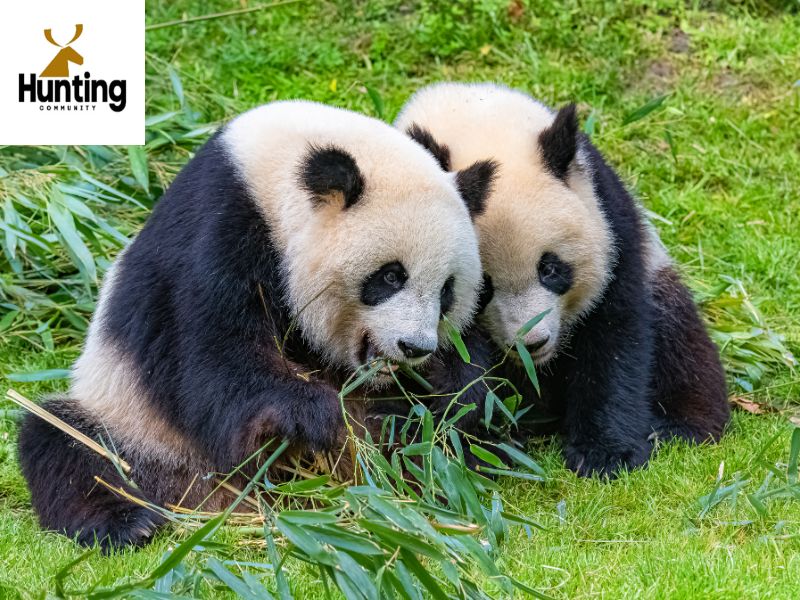8 Spiders in Australia
↓ Keep reading to watch this amazing video
It is estimated that there are around 10,000 different species of spiders living in Australia. Australia is known for the wide variety of venomous animals that live in the country and is also home to some of the most venomous spiders in the world. In Australia, only a few spiders are dangerous to humans, most spiders are no threat to us at all.
Spiders are interesting creatures, and each species has something to discover. Let's take a look at 8 spiders in Australia.
1. White-tailed spider (Lampona cylindrata)

©iStock.com/Natalia Marshall
White-tailed spiders are common in coastal areas throughout Australia. When fully grown, this spider measures about 12 to 18 mm (0.47 to 0.70 inches). It is gray or black with white spots on its body. The white marking near the tip of the abdomen is where this spider gets its name.
White-tailed spiders are mildly venomous to humans but relatively harmless. Symptoms of a bite from this species include redness, swelling, itching and pain. White-tailed spiders are nocturnal and will actively search for food during this time. During the day, they hide in secluded places such as around rocks, logs, fallen leaves, and household debris.
2. Hunter spider (Delena cancerides)
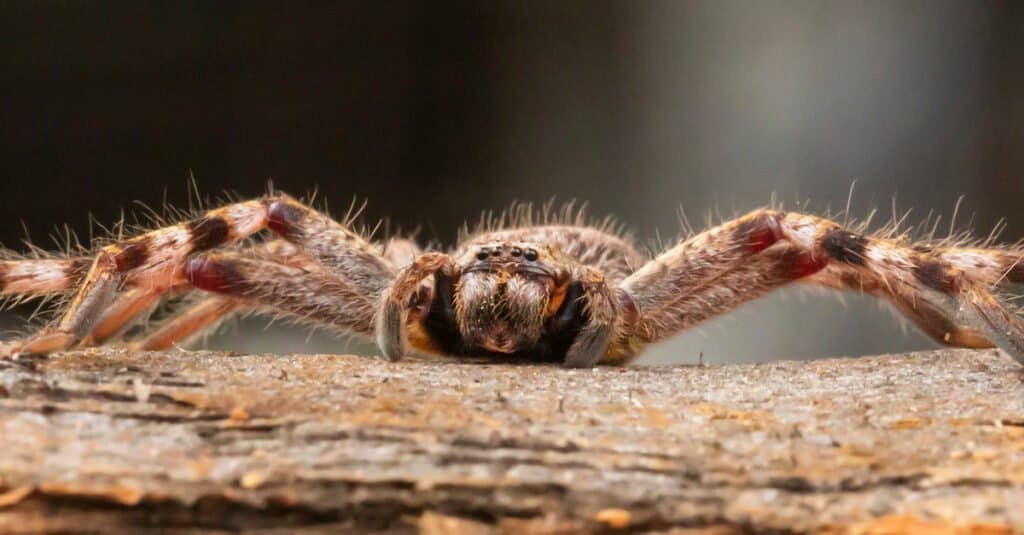
© Wright There/Shutterstock.com
The hunter spider is a huge species that lives all over Australia, and the giant crab spider is another name for them. Of the total 1,207 species of hunting spiders, 95 are mainly found in Australia.
This species lives in areas rich in forests, vegetated habitats, and natural debris. Active at night, this spider will hide in rocks, logs, fallen leaves, and other dark, secluded places during the day.
Hunting spiders are nocturnal hunters and can prey on many animals due to their large size. Their body size is about 2.2 to 2.8 cm (0.86 to 1.1 inches) long, with a leg span of 0.7 to 5.9 inches. At night, the spiders feed on animals such as cockroaches, small lizards and other invertebrates they encounter.
Hunter spiders are not dangerous and have a very docile nature. Their bodies are flat to fit into tight spaces and have the potential to find their way into your home. The large fangs of hunter spiders are painful to bite, but their venom has no medical significance to humans.
3. Australian Golden Web Spider (Trichonephila edulis)
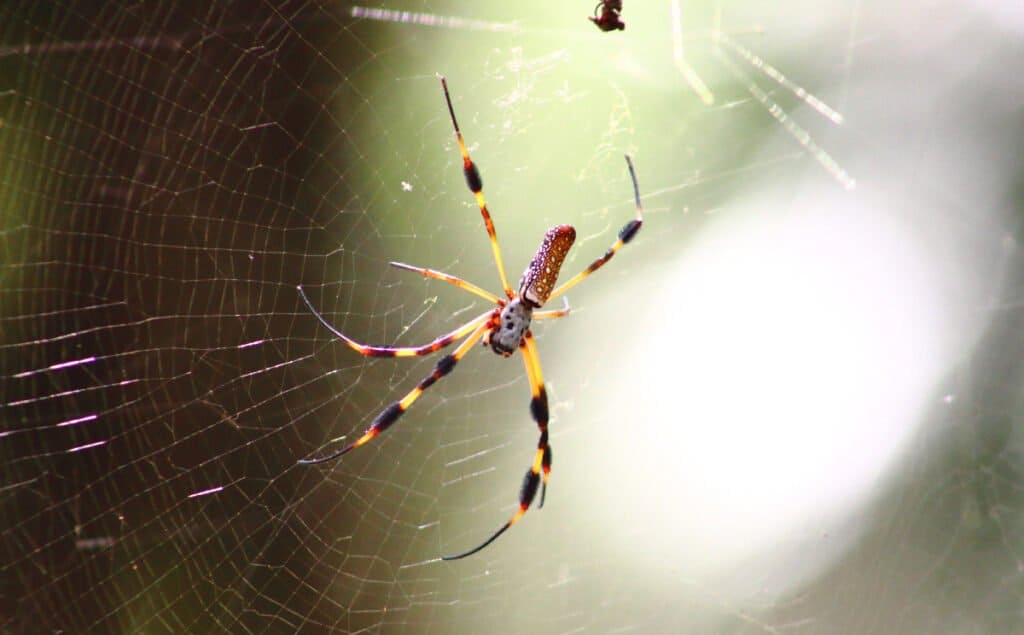
©Max Rossa/Shutterstock.com
The golden orb is a spider that lives in Australia and is commonly found in woodlands, forests and coastal grasslands. It is sometimes found in gardens, parks and urban vegetation. The females weave large circular webs of silk with a golden sheen.
Female Australian golden orb weavers are about 40 mm (1.5 in) long, while males are about 6 mm (0.24 in). This spider has a silvery abdomen and slender legs. It is more common in spring, and mating occurs during this period.
Flying insects such as flies, wasps, bees, and butterflies make up the golden orb weaver's food. They feed on whatever they catch in their nets and use venom to neutralize their prey. Wasps are one of the most common predators, the golden orb weaver wasp.
4. Whistling spider (Selenocosmia crassipes)

© iStock.com/Ken Griffiths
The whistle spider, a large tarantula native to the east coast region of Australia, is the largest spider in the country. Australia's largest spider, the whistling spider has legs up to 16 cm (6.2 in) long and a body size of around 6 cm (2.3 in). This spider has a sturdy body covered with fine hairs. Brown to gray-brown is the color of this spider. Whistling spiders live in burrows and build houses at depths of up to one meter.
Whistling spiders hiss when provoked. This spider has large fangs and bites from them are potentially dangerous. If bitten by this spider, symptoms such as nausea and vomiting may last for hours. Small animals like dogs and cats can die from this spider's venom.
5. Black House Spider (Badumna Badge)
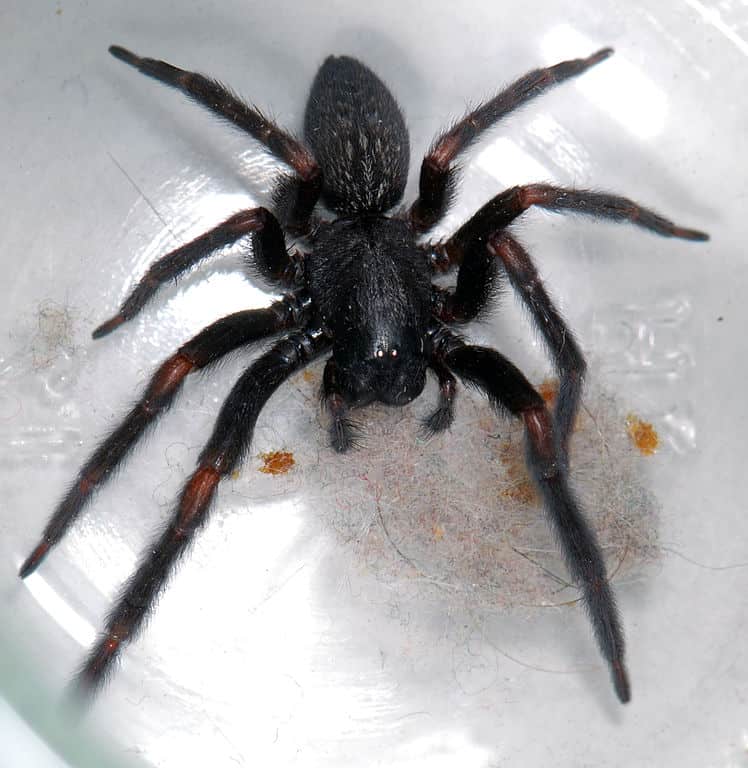
© Peter Halasz (User: Pengo) / CC BY-SA 2.5 – License
Black house spiders are found in southern and eastern Australia and are a common species in man-made structures. These spiders make messy webs to live in, usually in secluded places. Corners, tree trunks, walls, rocks and man-made structures are the species' habitat. Females spend most of their lives in the web, while males roam around in search of a mate.
The black house spider is a species of spider that is harmless to humans and is very common in Australia. Females of this species are about 18mm, while males are only 10mm. This spider is black or gray in color and has a body covered in fine hairs. Black house spiders are nocturnal and produce lacy webs at night. Animals such as flies, ants, butterflies and beetles are their most common food.
6. Redback spider (Latrodectus hasselti)
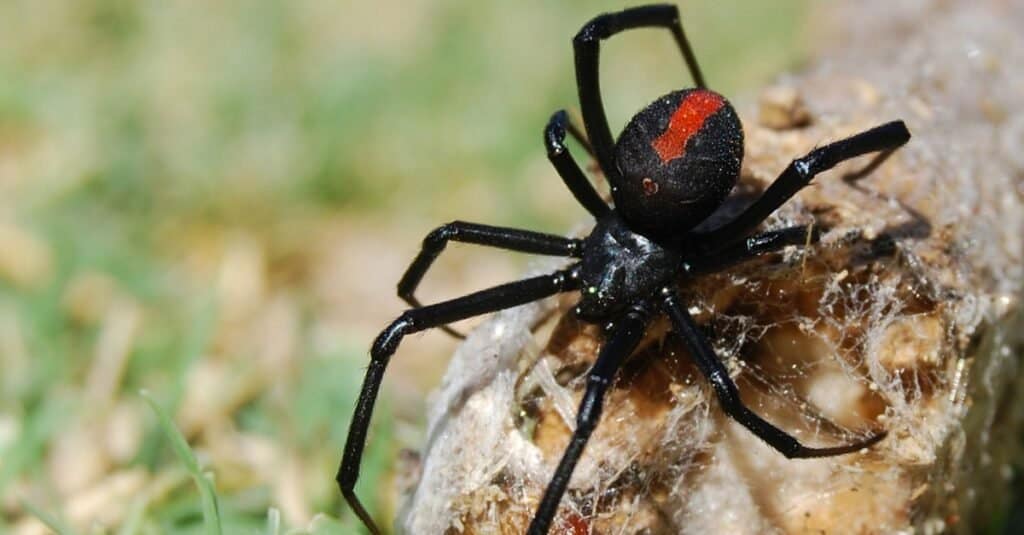
© iStock.com/maria72
The redback spider is a highly venomous species native to Australia and can be found throughout the country. Also known as the Australian black widow, this species is named for the red markings on the abdomen of the female spider. Female redbacks grow up to 15 millimeters (0.59 inches) in size, while males are only around 3 to 4 millimeters (0.11 to 0.15 inches).
This spider creates messy webs to live on. Their webs are spun in dark and secluded places like flower pots, children's toys, and the sides of houses. This spider usually lives in dry areas close to human structures. This spider feeds on small insects caught in the web. They inject their prey and wrap it in silk.
Redback spiders are among the most dangerous spiders in Australia, but not all bites cause venom. Symptoms of this spider bite include pain, swelling, nausea, vomiting, fever and heart problems.
7. Red-headed mouse spider (Missulena occatoria)
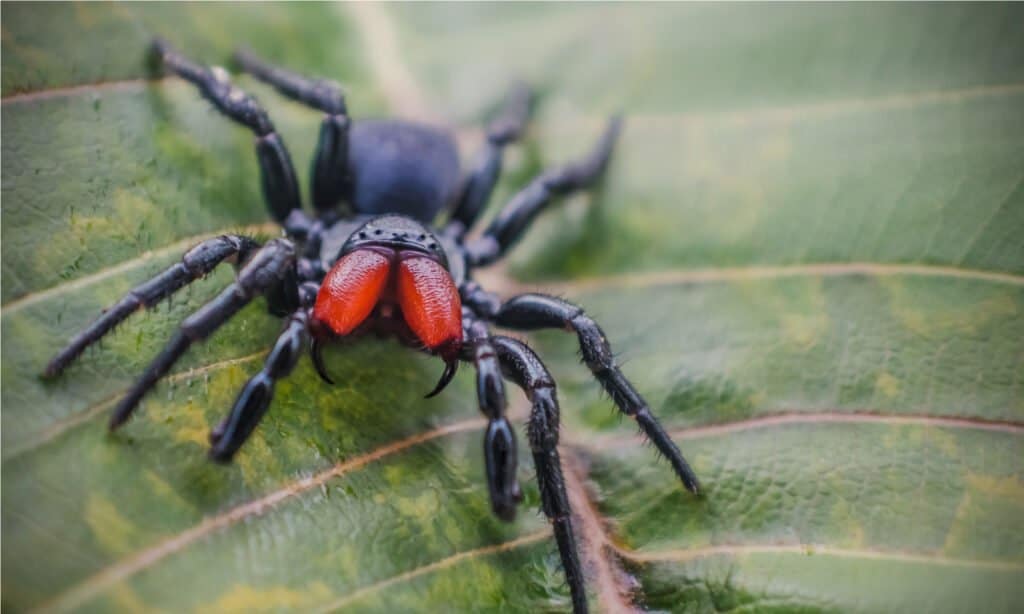
©Brittany North/Shutterstock.com
The red-headed rat spider lives in Australia, mainly in the farthest north and south of the country. This species lives in caves, usually near the shore of freshwater sources. Their caves have trapdoor entrances. Females of this species rarely leave their burrows, feeding and laying eggs at home. Males are sometimes seen in the summer, wandering around in search of a mate.
Males of this species have a bright red head and the rest of their body is black. Females are larger, sometimes more than twice the size of males, and are dark brown in color. Adult red-headed mouse spiders are about 12 to 24 mm (0.47 to 0.94 inches) long. The venom of this species is powerful enough to kill a human. Insects are the spider's main food source, but they also feed on small mammals such as mice.
8. Sydney Funnel Web Spider (Atrax robustus)
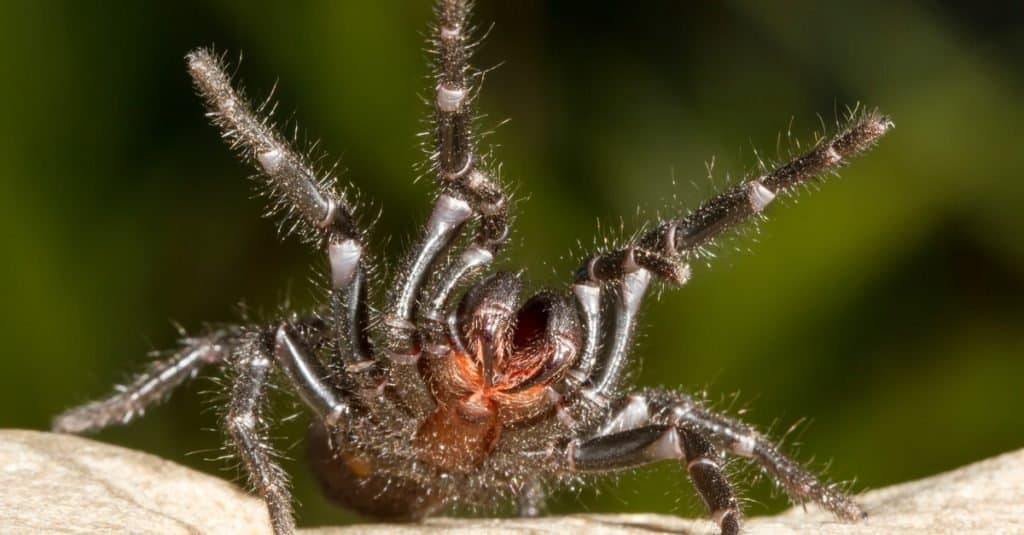
©Ken Griffiths/Shutterstock.com
The Sydney funnel-web spider is the most venomous spider in Australia and one of the most venomous in the world. The spider is native to eastern Australia and lives within a few miles of Sydney. This spider lives in silky burrows with trapdoor covers. This spider lives in moist habitats with natural debris.
Due to its lifestyle, the Sydney funnel-web spider is uncommon, as it spends its entire life in burrows. At night, they eat small animals such as cockroaches, small lizards and other spiders. The edge of their burrow is where this spider waits until its prey gets close enough to pounce. Using the silk around its burrow to sense when things are coming, this spider will quickly attack passing food.
The spider's venom is extremely dangerous and can kill humans, and their venom is neurotoxic and can kill a person within 15 minutes.
Next:
- Saw an alligator biting an electric eel with 860 volts
- The 15 Deepest Lakes in America
- Watch rare coyotes and bobcats now
More from AZ Animals
featured image

© iStock.com/Kathryn Willmott
about the author
Emilio Brown
Spiders, snakes, and lizards are some of my favorite types of animals, and I love keeping a few species as pets. I love learning about all the wonders nature has to offer and have been a writer for 5 years. In my spare time, you will find me walking into nature.
Thanks for reading! Have some feedback for us? Contact the 10hunting.com editorial team.
